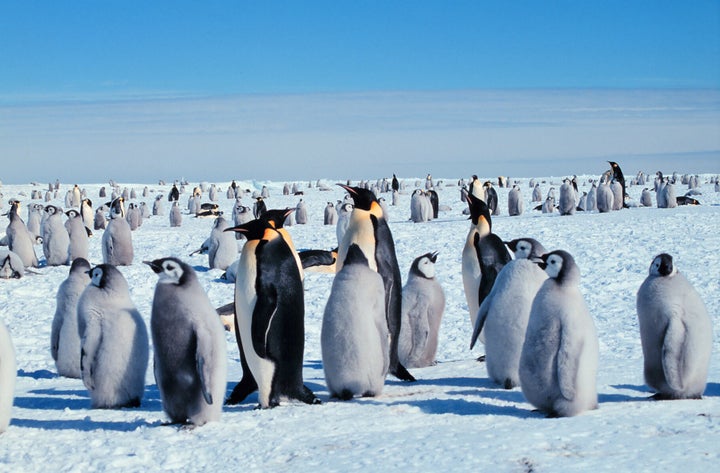
There’s been an “exciting discovery” – penguin poo has been spotted from space.
Scientists have been able to identify a new 500-strong colony of emperor penguins from space in West Antarctica simply by looking at their, uh, faeces – otherwise known as penguin guano.
Let us explain.
Emperor penguins are the largest of the 18 species of penguin and are known to reach heights of 1.2 meters.
They live in climates which can reach -60C, particularly remote and inaccessible places.
That’s why this discovery is such a big deal – scientists usually struggle to find them.
The penguins also breed on sea ice, meaning they can be particularly affected by climate change and reducing ice coverage.
The British Antarctic Survey found this new gathering of birds by spotting their poo stains (a stark contrast to the pretty white surroundings that makes up most of the continent) on satellite images from the European Space Agency’s Copernicus Sentinel-2 satellite mission.
By comparing the images to the world’s most advanced Earth observation satellite (MAXAR WorldView3), they were able to notice the evidence proving that penguin had been present.
This technique is part of the Wildlife from Space project, which is also used to track down and monitor walruses, whales, seals and albatrosses.
The news, declared an “exciting discovery” by scientist Dr Peter Fretwell, was announced on Penguin Awareness Day and means there are now 66 colonies known to be breeding on the coastline of Antarctica.
Fretwell added: “The new satellite images of Antartica’s coastline have enabled us to find many new colonies.”
Unfortunately, in this climate emergency, it wasn’t all positive news.
He said: “Like many of the recently discovered sites, this colony is small and in a region badly affected by recent sea ice loss.”
Rising global temperatures mean ice in both the Arctic and Antartica is melting, in turn making sea levels rise and threatening the biodiversity all over the world – but particularly for animals at both the North and South Poles.
For context, the British Antartica Survey has spent the last 15 years trying to track down new colonies by looking at satellite images of penguin poo. In fact, that’s how half of the known colonies have been discovered.
Unfortunately, around 80% of the penguin colonies are expected to be “quasi-extinct” by the end of the century, according to scientists. This means they may be doomed to extinction even if there are still individuals from the species alive.
But, if we work to mitigate climate change to no more than 2C of warming, up to 68% of seabirds and land animals would benefit – meaning there is still a chance of turning it around for the penguins.
